Electrical boxes are enclosures designed to house electrical components and wiring connections. They serve as protective containers to prevent electrical hazards and ensure the safety of installations. These boxes come in various types — such as junction boxes, switch boxes, and outlet boxes — each serving specific purposes in electrical systems.
At Hope Electrical Products Co. Inc., we provide top-tier electrical solutions catering to the diverse needs of our customers. Our extensive range of products is meticulously crafted to ensure the highest safety, reliability, and performance standards. With a customer-centric approach, we prioritize delivering solutions that meet and exceed our clients’ expectations.
Roles of Electrical Boxes in Power Distribution Systems
Electrical enclosures ensure the efficiency, safety, and functionality of power distribution systems through the following:
-
Compliance With Electrical Codes
Stringent electrical codes and regulations govern the design and installation of electrical boxes. This commitment to compliance ensures that power distribution systems meet established safety and performance standards. It also provides a robust framework for the secure and efficient transmission of electrical energy.
-
Containment of Wiring
Electrical enclosures meticulously contain and manage electrical wiring, preventing potential tangling or exposure. This organized arrangement enhances the system's efficiency and mitigates safety hazards that may arise from disorganized or exposed wiring. In addition, they contribute to the longevity of the power distribution system by safeguarding wiring from wear and tear.
-
Device Mounting
Electrical boxes serve as secure mounting points for various devices integral to power distribution systems. Components such as switches, outlets, circuit breakers, and other devices find stable housing within these enclosures. This feature ensures that all critical elements are properly integrated into the power distribution network, allowing seamless operation and maintenance.
-
Grounding Connection
Some electrical enclosures are engineered to provide a grounding point for the power distribution system. This connection directs potentially hazardous electrical faults safely to the ground, preventing the risk of electrical shock. It also helps maintain a consistent electrical potential reference point, minimizing the likelihood of voltage imbalances or fluctuations.
-
Insulation
Some electrical boxes provide insulation, serving as a protective barrier against the heat generated by various components. This helps maintain the temperature within safe limits, preventing overheating and ensuring the long-term reliability of the distribution system. In addition, the insulation serves as a protective shield against external contaminants like dust, moisture, and foreign particles.
-
Safety Enclosure
Electrical enclosures act as robust barriers by encapsulating wiring connections, parts, and components. They effectively prevent accidental contact with live parts. Thus, this containment significantly reduces the risk of electrical shocks or fires, ensuring the overall safety and reliability of the power distribution system.
 How Materials and Construction Impact Safety Features
How Materials and Construction Impact Safety Features
The materials and construction of an electrical box are pivotal in determining its safety features and overall effectiveness in safeguarding systems. First, the choice of materials directly influences the box’s ability to provide a secure enclosure for electrical connections. Common materials include metal — such as steel or aluminum — and non-metallic options like polyvinyl chloride (PVC) or fiberglass.
The construction design of electrical enclosures further contributes to safety. Robust construction ensures that the box maintains its structural integrity, preventing deformation or damage that could compromise the system. Moreover, the seams and joints are critical aspects of construction, as they determine the box’s ability to keep out moisture and other contaminants.
Additionally, well-constructed boxes facilitate easy and secure installation. This reduces the risk of errors during setup or further maintenance. The design should also allow proper ventilation to dissipate heat generated by electrical components, preventing overheating and potential safety hazards. Furthermore, it must consider accessibility for routine inspections and repair activities.
Types of Electrical Boxes and Their Applications
Understanding the specific functions and applications of the following types of electrical enclosures is essential for proper installation and maintenance in various systems:
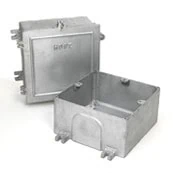
Data boxes are used for low-voltage electrical connections, such as cables, networking parts, and components. Common applications include the installation of Ethernet or telephone outlets, automation systems, and other low-voltage structures.
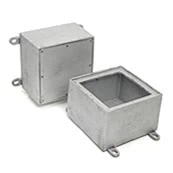
Floor boxes are installed on the floor to provide electrical outlets while maintaining a flush profile. They are mostly used in office spaces, conference rooms, or areas with raised floors to discreetly supply power. They can also be employed in settings requiring a seamless, unobtrusive power supply.
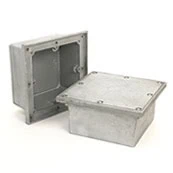
Junction boxes serve as protective enclosures for wire connections, preventing exposure and safeguarding against external elements. They are commonly used for concealing and organizing wiring connections in ceilings, walls, and floors.
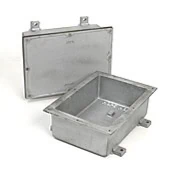
Outlet boxes provide secure housing for electrical outlets, ensuring safe and organized connections for plugs. They are mostly utilized in installing electrical receptacles in walls and ceilings to facilitate power access in various locations.

Switch boxes are designed to house switches that control lighting or other electrical devices, ensuring a secure and organized installation. These enclosures are often used in mounting light switches, dimmers, and other control devices.

Weatherproof boxes are engineered to protect electrical components from outdoor elements, such as rain and snow. They are common in outdoor electrical outlets that streamline installations in areas exposed to the weather.
Common Troubleshooting Techniques
The following troubleshooting techniques are essential for maintaining the functionality and safety of electrical boxes:
1. Visual Inspecting
A visual inspection is the first line of defense when troubleshooting an electrical box. This comprehensive assessment also serves as the foundation for further diagnostic steps. Technicians meticulously examine the exterior and interior of the container, checking for any signs of wear, damage, or irregularities. Burnt areas, loose connections, or exposed wiring can be readily identified through this method.
2. Using Multimeters
Employing a multimeter is a fundamental technique for delving deeper into the electrical characteristics of the box. Technicians use the multimeter to measure voltage, current, and resistance, allowing them to pinpoint potential issues such as short circuits or open circuits. The tool also aids in the identification of electrical irregularities, which guides workers toward a more precise understanding of the problem.
3. Checking for Overheating
A diligent check for overheating is imperative to ensure electrical boxes’ safe and efficient operation. Technicians usually assess the temperature of the box and its surroundings, identifying any areas exhibiting abnormal heat. This step helps to detect potential issues — such as excessive current or inadequate ventilation — which could lead to safety hazards.
4. Tightening Connections
Loose connections can cause voltage drops and potential electrical failures. Technicians rigorously tighten all cables and terminals to reduce the possibility of loose connections. This procedure ensures that the electrical enclosure maintains optimal continuity, resulting in a stable and reliable electrical system. It also lowers the risk of electrical faults that could result in fires or equipment damage.
5. Conducting a Load Test
The execution of a load test provides valuable insights into how electrical boxes function under normal operating conditions. Technicians connect a known load to the circuit before observing and monitoring the system’s response. This systematic testing allows for identifying unexpected fluctuations or failures, guiding workers toward the specific components that may require attention.
Partner With Hope Electrical Products for Top-Notch Enclosure Solutions
At Hope Electrical Products Co. Inc., we offer a diverse and high-quality range of electrical solutions that cater to the unique requirements of our clients! Our commitment to excellence extends beyond providing products; it reflects our ongoing dedication to innovation and growth. We remain focused on staying at the forefront of technological advancements and industry trends.
Contact us today for more information! You can also request a quote now.



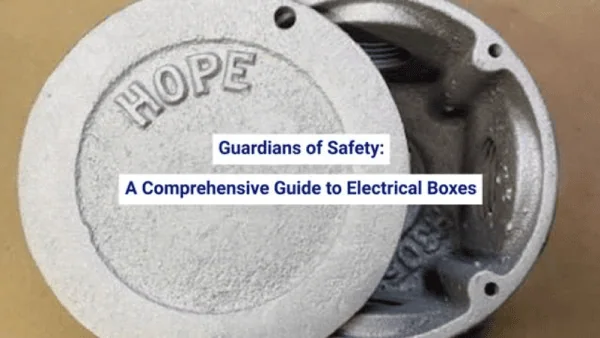
 How Materials and Construction Impact Safety Features
How Materials and Construction Impact Safety Features